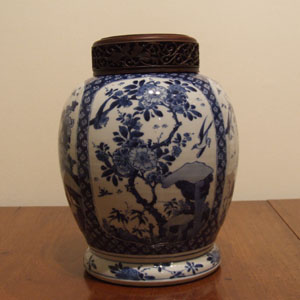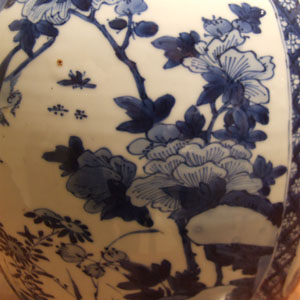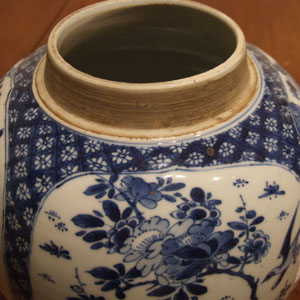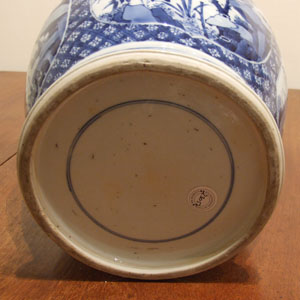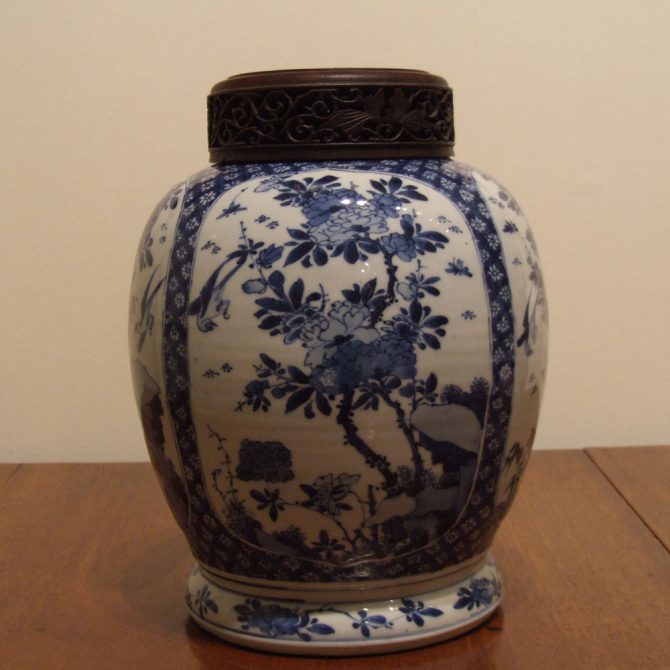
KANGXI 1662 – 1722 Chinese Export Porcelain
A Blue and White Chinese Export Porcelain Jar, Kangxi Period c.1690-1710. This Unusual Form with It`s Flared Base and Raised Moulded Panels is Decorated with Bright Tones of Cobalt Blue with Panels of Flowering Tree Peony and Prunus Set Against a Diaper Ground.
SOLD
- Condition
- Perfect but lacking the original porcelain cover, the wooden replacement is Chinese late 19th or early 20th century.
- Size
- Height : 25 cm (9 3/4 inches)
- Provenance
- N/A
- Stock number
- 23057
Information
Plum Blossom (Prunus) / Meihua :
Plum Meihua is one of the most important plants in Chinese art. Their flowers grow on knurled old angular branches, the flowers are fragile and pure, so they can be a symbol of vigour in old age as well as purity. The tree is the first to flower after the long hard winter, symbolically it can represent perseverance as well as renewal. This meaning is enhanced by a background of cracked-ice, the design can be seen as representing the end of winter and the beginning of spring with the ice of winter cracking to reveal a new year dawning. Branches of plum blossom convey the `Five Blessings` Meikai wufu, longevity, wealth, health, love of virtue and a peaceful death. The number five, an auspicious number to the Chinese, is taken from the five petals of the plum flower.
Peony :
Peonies are the most commonly encountered flower on Chinese porcelain, indeed in Chinese art in general. There are two cultivated types of peony commonly depicted, the tree peony Paeonia Suffruicosa (Mudan) and the herbaceous peony P.Lactiflora (Shaoyao). Both have rich exuberant flowers with thin silk like petals but the plants are rather different to each other. The tree peony is not in fact a tree but a deciduous shrub, sometimes rather large and sprawling, it has irregular woody stems. It shares a similar leaf and flower form to the herbaceous peony but they are not close in other ways. The Chinese refer to the peony as the `King of flowers` and are seen as equivalent to the first rank among officials. The flowers are closely associated with royalty because they have been grown in imperial gardens since the Sui dynasty (581-618). The peony is one of the flowers of the four seasons and represents the Spring. It symbolizes wealth and honour, honour in the sense of high rank, having an official position, or high social status.
